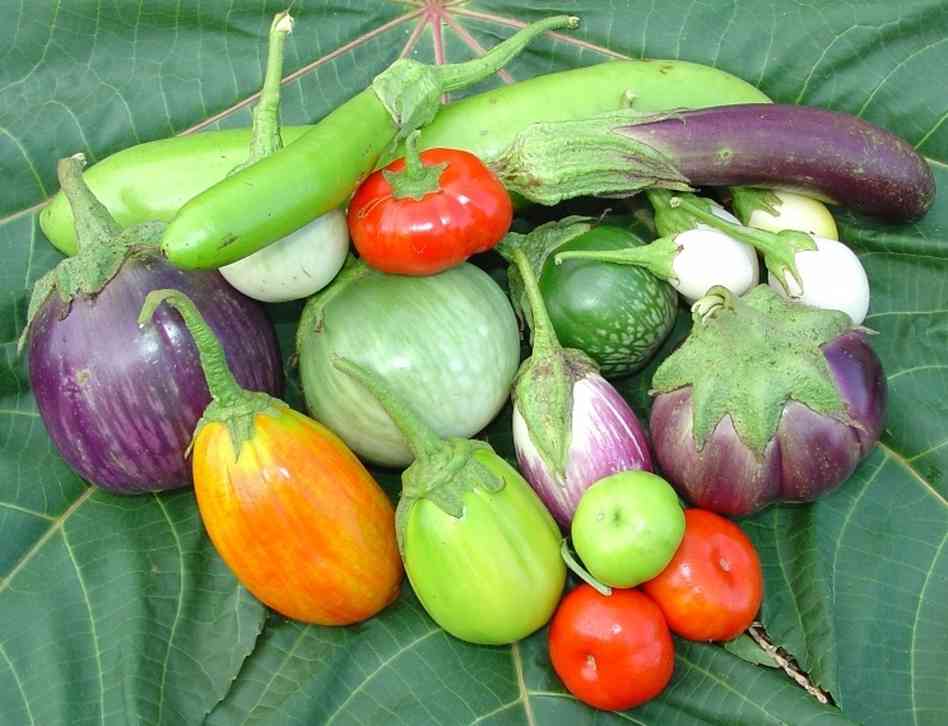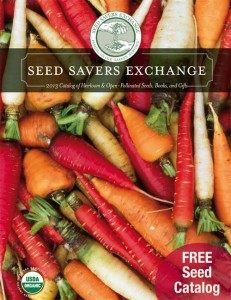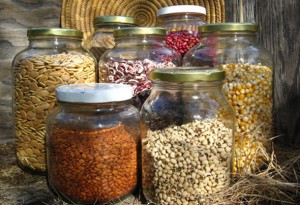Independence is at the root of sustainability and represents a key concept of the Resiliency Movement. Independence has many meanings from alternative energy solutions to making healthier food choices to leveraging technology whenever possible.
As we move into the planting season, I wanted to look at the sustainability of our current gardening practices. Specifically, I want to talk about the sustainability of the seeds you use to grow organic food in your garden.
Most people go to the garden or home improvement store this time of year and purchase seeds or seedlings for transplant into the garden. We think we are doing well (in terms of sustainability) because we are growing fruits and vegetables at home; however, how is purchasing seeds from the store any different than purchasing mature fruits and vegetables?
Sure…seeds are less expensive and we have more control over the growing conditions of these crops, but the fact remains that we are relying on a store to start our gardens every year. Even if we make our own organic fertilizer (compost), refrain from chemical additives and pesticides, we still need the store to sell the seeds required to create sustainable gardens at home.
Concerns about GMOs
In addition to our reliance on the commercial availability of seeds, there is another lurking danger we should consider. What I mean is that seeds may not be what they appear.
Yes – I am talking about genetically modified organisms (GMOs). Did you know that almost all of the corn and soybeans seeds commercially available in the United States are products of genetic modification? In fact, the patent for genetically modified soybeans is held by Monsanto; a multinational chemical and agricultural biotechnology company based in Missouri.
These GMO soybeans are designed to be resistant to herbicides (also manufactured and sold by Monsanto under the Roundup brand). Without this turning into a tangent, did you also know that Monsanto actually has a Gestapo-esque team that travels the country looking for farmers trying to save their own soybean seeds? Since this represents patent-infringement, many of these farmers are forced into court proceedings they simply cannot afford. Anyway, I digress.
Although many of the seeds at your local garden store may say they are non-GMO, organic seeds, how can we really be sure? And more importantly, how can we ensure the survival of our gardens year after year without relying on chain retailers for supplies every spring?
The Answer is Cultivating Our Own Heirloom Seeds
First, it’s important to understand that heirloom seeds are nothing new. The whole idea behind heirloom seeds is that they have lasted for centuries using open pollination and other organic gardening techniques. It’s also worth noting that heirloom seeds often differ based on a particular climate zone. Vegetable strains that do well in Texas, for example, probably won’t do too well in the high elevation region where I live.
As usual, however, big business has infiltrated governments around the world in an effort to promote their own products. In the European Union, for instance, it is illegal to buy or sell seeds that haven’t been “approved for sale.” The Heritage Seed Library was created as a direct result of this legislation with the sole purpose of the seed library being the preservation of as many heirloom strains as possible.
While heirloom strains are often grown year after year in isolated areas of the country (and the world), most of the seeds we purchase at the local garden center are derivative products that lack many of the nutrients found in popular heirloom varieties. USDA studies have proven that in just the last fifty years, many of the nutrients we get from fresh fruits and vegetables have declined significantly as a direct result of GMOs and other unsustainable agricultural practices.
Now that we understand some of the possible concerns associated with purchasing seed packets from “normal” sources each year, let’s do something different this year. I usually buy my seeds from Seed Savers Exchange (seedsavers.org), a non-profit organization that is arguably responsible for the increased popularity of heirloom seeds in recent years. There are numerous other online companies also specializing in heirloom seed varieties and a quick Google search should net you plenty of results.
The real trick is to start preserving your seeds after successfully harvesting your first heirloom crop. This is where food independence really takes off because we have removed our dependence on commercial retailers for our food source.
Gathering Seeds
The key to preserving high-quality seeds for next year’s crop is open pollination. By allowing your plants to naturally interact with one another, you are ensuring the health of your seeds for years to come.
With this in mind, certain species should not be planted near each other to prevent cross-pollination. Various types of beans, for instance, should be planted on opposite sides of your garden to prevent creating hybrid seeds that may or may not produce desired results the following year.
Other things to keep in mind include timing your harvest based on each plant’s method of seed dispersal, carefully removing the seeds and laying them out to dry before storing them in glass jars or other containers that have been properly labeled. All seeds should be stored in a cool, dark and dry place until the next planting season comes around to ensure maximum germination rates each year.
Some plants actually need time to become overripe before the seeds are ready for harvest. What I like to do is choose one or two of the most robust looking plants each year and allow these plants to fully mature for seeds; even if that means the produce is not edible. This ensures that my seeds are always the best of the bunch and I can be confident in the success of my garden the following year.
If seeds will not be used for a while, they can also be frozen after properly drying them. This is an excellent way to create your very own seed bank at home – ensuring the success of your garden into the foreseeable future.
While many of these ideas are simple, taking the extra time to plan for the long-term health of your crops without relying on seed retailers year after year is one the simplest things we can do right now to create a more resilient lifestyle while providing ourselves with the absolute healthiest produce available.





